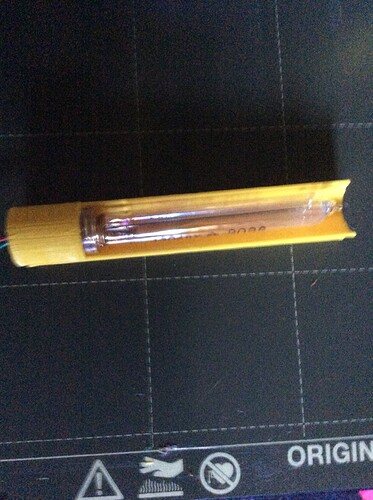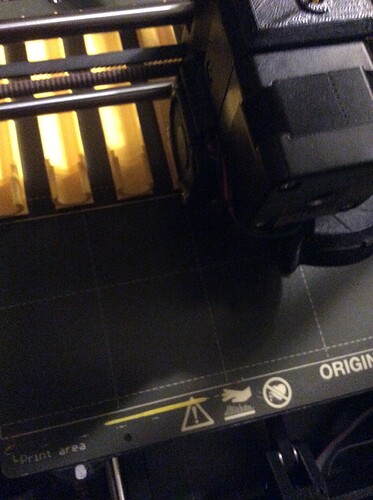very interesting… valuable data!
but the last field of the MultiGeiger setup indicates something different: the description says “Factor of current dose rate vs. accumulated” and asks values > = 2
It is not the conversion factor, I think, what should I put in it?
Thank you!
I have quite a collection of tubes. Haven’t tried them all yet.
The YouTube video here explains it
Just curious. How do you hook up your geiger tubes?
I am developing my own holders and 3D print them.
And have also holders for SI21G and SBM19.
Received some new tubes from Romania via eBay. I ordered SI22G’s but got two SI20G.
I am very curious about the sensitivity compared with the SI22G.
Did you mention you have a seismograph? What platform did you use and under what approximate budget?
I’ve been looking for a platform that stores historical data online and is relatively cheap, similar to sensor.community, but I couldn’t find anything like it for seismographs.
Hi Deedee
I have developed radiation measuring instruments for over 20 years of which also geiger muller counter instruments.
First: calibration is important, in my country the official office publishes yearly an isodose map of the country which is dose/year. Based on that i calculated my calibration factor for my location which was way off the one in the data books of Philips/valvo. Good calibration with a source is not trivial.
Second: imho cps or cpm data on the map is meaningless since every instrument may have different calibration factors so cpm data cannot be compared, only µSv/h data can
Third: placing the tube horizontal or vertical boils down to being more sensitive to ground radiation (typically in the order of 90 nSv/h) or environmental radiation e.g. in the vincinity of nuclear power plants. In that case the gm is placed vertically, typically 3m above ground or more.
Fourth: the counting time is important, the longer the better statisticlly. Typically these instruments have several counting times, in my instrument: 10 seconds is a basic interval, 6x10"= a one minute data, x10 = a 10 minute data, x6 is a one houd data. So I measure and publush on my broker 3 readings. Btw, the 10" is also used to filter out statistical out of range burst (95 % or 2 SD).
Last but not least, every gm counter has a plateau voltage, the HV should be properly set in the middle of the plateau and should be stabalized if not the calibartion factor changes.
ps my data goes to a free broker and alarms are sent out via IFTTT to to my smartphone.
Succes!
FWI
Hi Freddy,
Thanks for your information.
My gm is hanging on my balcony fence, as I live on the first floor, and don’t have a garden. It’s about 4 metres high.
I am using SBM19 in my gm’s. I have built about 6 now. All of the multigeigers in the Netherlands I have arranged or built. It’s my plan to get more of them, working both with WiFi and LoRa.
I don’t live close to a nuclear powerplant.
I have made a display in my house that shows the current radiation value. IFTT is also one of my future plan. Which free broker do you use? It would be interesting to send an sms if radiation level exceeds a certain value. I don’t have my G4 on continuously.
I also got an RGB backlight display that I want to use to show both the current value combined with the color of the multigeiger legenda.
Hi Deedee
I suppose you’re from the Netherlands, I’m from Belgium.
The ground radioactivity seems a little bit to high and could be due to calibration. Check who is managing radiometric readings in your country. Mostly they share background readings in Sv/y per location which is interresting to calibrate with. Check ANVS in the Netherlands.
I use Hivemq as MQTT broker and I am very satisfied, easy to use their free broker en it is maintained well. You just need to find a driver for MQTT in your program. I found one for microPython and it works like a charm. Tip: use a clever topic-tree to avoid cluttering from other users since free MQTT is open.
Your RGB backlight hopefully will never differ from Green;=)
succes!
Yup, I live in the Netherlands. I am going to check out your advice.
I think that the RIVM is monitoring the background radiation in the Netherlands.
Thank you @ Deedee and everybody else for sharing your experience here. This is so useful ![]()
Does anibody know is the geiger counters on AliExpress have to be calibrated before usage? I plan to get this one: Assembled Radiation Detector System Miller Tube
I have bought such a kit in the past. It does not come with a display. It just ticks. The guy with the swiss accent has an interesting extension. https://www.youtube.com/watch?v=K28Az3-gV7E
Interesting! Thansk for the link. You still use it? With an ESP?
So the device is called "Alibaba RadiationD-v1.1 (CAJOE) ", i found source code for Arduino. Looks like it sends impulses over the pin, have to check how to read them with a RPI. ![]()
No, have a couple of multigeigers. They have an esp32. Just a shame that the heltec wireless stick V2 is not sold anymore. Glad I still have some in stock.
I have bought two Heltec wireless stick V3. It’s my plan trying to alter the design that it works with this processor.
Seems he is using it for long term monitoring, wondering if it is really suitable for such a use case from a fire protection point of view. Is the tube causing any fire danger? I am unfortunately not very experienced with geiger counters.
BTW: Someone told me that the data quality those tubes are not very reliable. But as far i can see, the tube of this particular board can be replaced with a high-quality one.
I also found the “FTLAB GDK101 - Gamma Radiation Sensor”, what do you think about this one?








